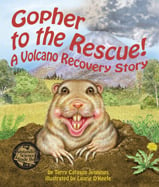Alignment to Standards for MN

| Grade | Number | Standard |
|---|---|---|
| 1 | 1.4.1.1.1 | Describe and sort animals into groups in many ways, according to their physical characteristics and behaviors. |
| 1 | 1.4.2.1.1 | Recognize that animals need space, water, food, shelter and air. |
| 1 | 1.4.2.1.2 | Describe ways in which an animals habitat provides for its basic needs |
| 2 | 2.4.1.1.1 | Describe and sort plants into groups in many ways, according to their physical characteristics and behaviors. |
| 2 | 2.4.2.1.1 | Recognize that plants need space, water, nutrients and air, and that they fulfill these needs in different ways. |
| 3 | 3.4.1.1.1 | Compare how the different structures of plants and animals serve various functions of growth, survival and reproduction. |
| 3 | 3.4.1.1.2 | Identify common groups of plants and animals using observable physical characteristics, structures and behaviors. |
| 5 | 5.3.1.2.2 | The surface of the Earth changes. Some changes are due to slow processes and some changes are due to rapid processes. Explain how slow processes, such as water erosion, and rapid processes, such as landslides and volcanic eruptions, form features of the E |
| 5 | 5.4.1.1.1 | Describe how plant and animal structures and their functions provide an advantage for survival in a given natural system. |
| 5 | 5.4.2.1.2 | Explain what would happen to a system such as a wetland, prairie or garden if one of its parts were changed. |
| K | 0.4.1.1.1 | Observe and compare plants and animals. |
| K | 0.4.1.1.2 | Living things are diverse with many different observable characteristics. Identify the external parts of a variety of plants and animals including humans. |
| K | 0.4.2.1.1 | Observe a natural system or its model, and identify living and nonliving components in that system. For example: A wetland, prairie, garden or aquarium |
| K-3 | K-3.IV.A | demonstrate chronological thinking. |
| K-3 | K-3.V.A.2 | use maps and globes to locate places referenced in stories and real life situations. |
| K-3 | K-3.V.A.5 | use the equator and poles as reference points to describe locations. |
| K-3 | K-3.V.B. | use maps and globes to locate people, places and things. |
| K-3 | K-3.V.B.1 | locate places by using simple maps, and understand that maps are drawings of locations and places as viewed from above. |
| K-3 | K-3.V.B.3 | interpret simple maps using the map elements of title, direction, symbols, and a map key or legend. |
| K-3 | K-3.V.B.4 | locate the continents and oceans on a map of the world and a globe. |
| K-3 | K-3.V.B.5 | recognize the outline shape of the contiguous United States. |
| K-3 | K-3.V.C.1 | name and locate physical features of the United States, including places about which they have read. |
| K-3 | K-3.V.C.3 | identify specific landforms and waterways on a map using geographical terms. |
| K-3 | K-3.V.C.4 | locate major river systems and mountain ranges on continents studied. (Nile River, Mekong River, Himalayan Mountains, Alps) |